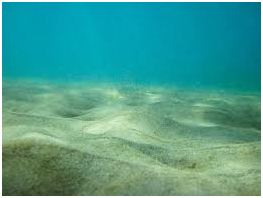One ocean summit UNESCO pledges to have at least 80% of the sea bed mapped by 2030
What is the news:
- On the occasion of the One Ocean Summit taking place in the French city of Brest, UNESCO has announced that at least 80% of the seabed will be mapped by 2030, compared to 20% currently, with the support of its Member States and the private sector.
- Knowing the depth and relief of the seabed is essential to understanding the location of ocean faults, the workings of ocean currents and tides, and the transport of sediments.
- Such data help protect populations as they allow us to anticipate seismic and tsunami risks, identify natural sites that need to be safeguarded and fisheries resources for sustainable exploitation.
- They are needed to plan the construction of offshore infrastructure and to respond effectively to disasters such as oil spills, air crashes and shipwrecks. They also have a major role to play in assessing the future effects of climate change, whether it be temperature increases or sea level rise.

What is seabed:
- The seabed (also known as the seafloor, sea floor, ocean floor, and ocean bottom) is the bottom of the ocean. All floors of the ocean are known as ‘seabeds’.
- The structure of the seabed of the global ocean is governed by plate tectonics.
- Most of the ocean is very deep, where the seabed is known as the abyssal plain. Seafloor spreading creates mid-ocean ridges along the center line of major ocean basins, where the seabed is slightly shallower than the surrounding abyssal plain.
- From the abyssal plain, the seabed slopes upward toward the continents and becomes, in order from deep to shallow, the continental rise, slope, and shelf.
- The depth within the seabed itself, such as the depth down through a sediment core, is known as the “depth below seafloor.”
- The ecological environment of the seabed and the deepest waters are collectively known, as a habitat for creatures, as the “benthos.”
Considerable progress since 2017
- In 2017, UNESCO joined forces with the Nippon Foundation, Japan’s largest private foundation, to launch the Seabed 2030 programme. Since then, it has been coordinating the deployment of sonars and collecting the data they provide.
- The programme has convinced many States to share their data concerning the seabed near their coasts. The first results of this programme are tangible: when Seabed 2030 was launched five years ago, only 6% of the seabed was mapped to modern standards, today the figure stands at 20%.
- The potential to accelerate seabed mapping is further enhanced by recent technological innovations. While sonar technology has been used since the 1960s to scan the seabed, sonars now have multiple beams enabling them to measure water height at several points and in several directions at once, which represents a considerable time saving.
- Moreover, whereas sonars were previously attached to manned seafaring vessels, scientists are now able to pilot them remotely on autonomous vessels, operating on the same principle as aerial drones.
- This solution opens up the possibility of mapping the seabed well beyond navigation routes. It also has the advantage of being more affordable.
A goal with an action plan
- On the occasion of the One Ocean Summit, Ms Azoulay called for efforts to be stepped up by mobilizing the 150 Member States of UNESCO’s Intergovernmental Oceanographic Commission (IOC) and the private sector. IOC experts have already assessed the resources needed to achieve the target of at least 80% mapping by 2030. They consist of three axes:
- The mobilization of a fleet of 50 vessels specially dedicated to seabed mapping.
- Intensifying the use of sonar on autonomous vessels.
- The transmission by governments and corporations of cartographic data they have already archived.
- According to IOC experts, the total funding requirement for the project stands at $5 billion, i.e., an average of $625 million per year by 2030.
UNESCO and the ocean
- The United Nations Educational, Scientific and Cultural Organization is the UN agency in charge of ocean sciences.
- Founded in 1960, UNESCO’s Intergovernmental Oceanographic Commission (IOC), brings together 150 countries, coordinates global programmes such as ocean mapping, ocean health monitoring and tsunami risk prevention, as well as numerous scientific research projects.
- The agency is also the custodian of unique ocean places, through 232 marine biosphere reserves and 50 marine World Heritage sites of outstanding universal value.
- UNESCO is leading the United Nations Decade of Ocean Sciences for Sustainable Development (2021 to 2030), which this year will see the organization of several major international summits that will help to amplify the collective mobilization in this field.
About UNESCO:
- Headquartered at the World Heritage Centre in Paris, France.
- Founded in 1945
- Director general- Audrey Azoulay
- The United Nations Educational, Scientific and Cultural Organization(UNESCO) is a specialised agency of the United Nations (UN) aimed at promoting world peace and security through international cooperation in education, arts, sciences, and culture.
- It has 193 member states and 11 associate members, as well as partners in the non-governmental, intergovernmental, and private sector.
- UNESCO has 53 regional field offices and 199 national commissions that facilitate its global mandate.
Subscribe
0 Comments





